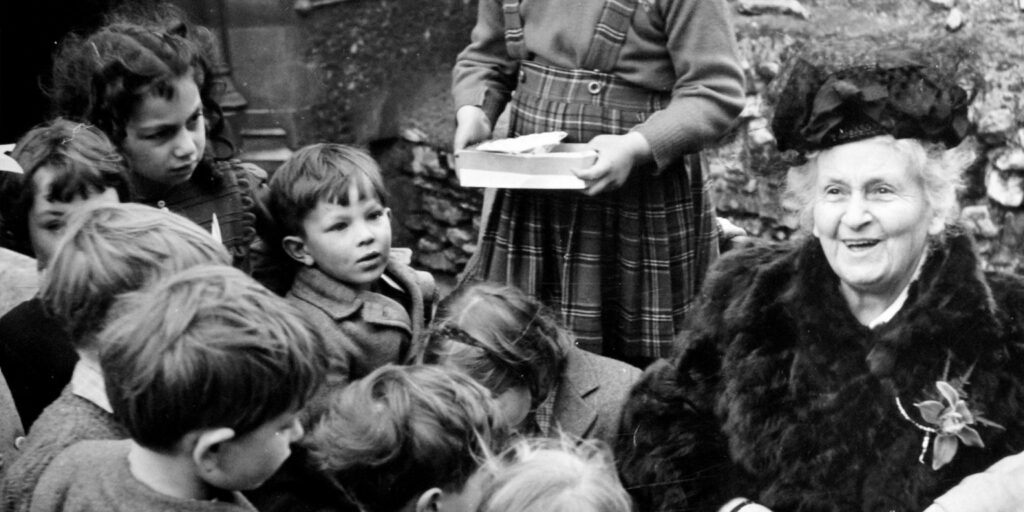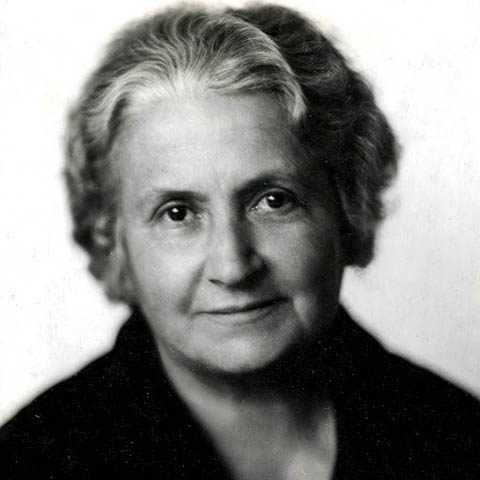
Born in 1870, Maria Montessori was ahead of her time. Undeterred by the conventional ideas about proper roles for women, she studied medicine and became Italy’s first female physician in 1896.
As a doctor, Montessori became very interested in helping children. She began working in the psychiatric clinic at the University of Rome with children who had been labelled “deficient and insane.” She observed that these children, who had been shut off from the rest of the world, were desperate for stimulation and would make use of anything in their environment to meet this need. Where other doctors saw their playing with breadcrumbs as a sign of their “deficiency,” Montessori saw it as a sign of their need for stimulation. Providing them with a sensory-rich environment and hands-on techniques fed their appetite for learning and, within two years, the children were able to pass Italy’s standardised public school tests. Dr Montessori’s success gained the attention of the national government.
Her next great success came in 1907 in the San Lorenzo slums of Rome. There she created the first Children’s House or “Casa de Bambini” for 50 poor children who were left on their own while their parents went to work. Local officials were tired of managing an unruly bunch of children and asked Dr Montessori to help. She set to work immediately, developing her method there based on her observations of the children at work. She found that the children absorbed their environment almost effortlessly, that they learned best by doing, and that they had innate desire to learn. People from all over the world came to see this new and revolutionary method of education.
In 1913, Montessori visited the United States at the invitation of Alexander Graham Bell and his wife. Thomas Edison and Helen Keller were also supporters. She spoke at Carnegie Hall and worked with professors at Harvard who helped to get her book, The Montessori Method, translated into English. At the Panama-Pacific International Exhibition in San Francisco, she gained worldwide attention yet again with her “glass schoolroom” – where people could come to see her method in action through a model classroom.
At the request of countries all over the world, Montessori helped to develop teacher-training centres. She took her work to India during World War II and developed her work “Education for Peace” and was nominated three times for the Nobel Peace Prize. Montessori died in 1952 in Holland
To learn more about Maria Montessori there are many places you can go. Follow the links below,
https://montessori.org.au/biography-dr-maria-montessori
http://ami-global.org/montessori/biography-dr-maria-montessori
